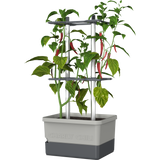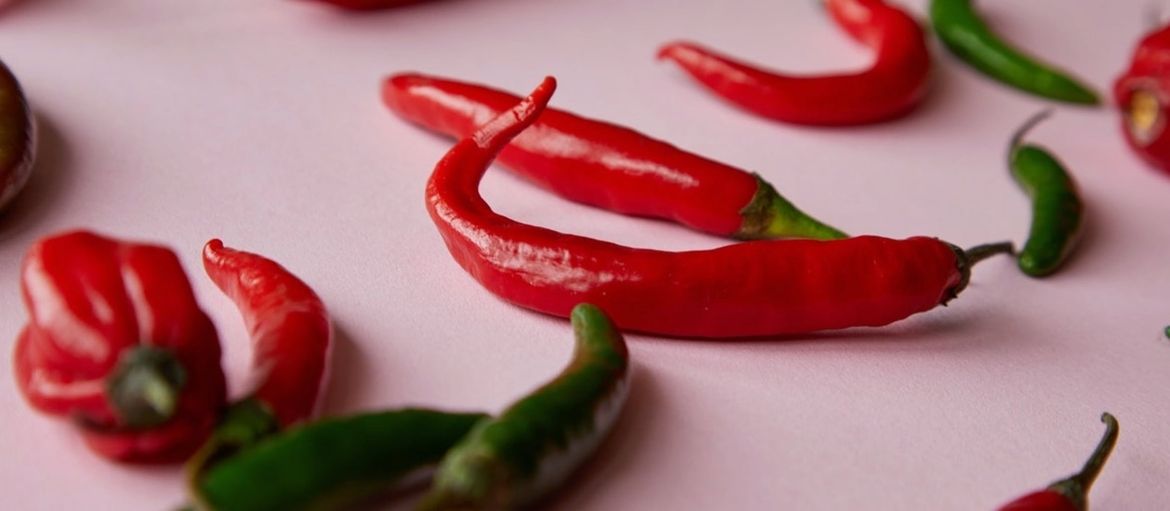Attention, Spicy! How To Succeed With Chilli Cultivation
Delicious homegrown chillies
Chillies can be grown in gardens, on terraces and on balconies. They are excellent for pot cultivation and make a great addition to your vegetable garden. Below, read the most important to-dos for successfully growing these spicy fruits.
Chilli cultivation - When is the right time?
March is the perfect time to start growing chillies. Chilli plants love heat, so don't sow the seeds directly in the ground. First, cultivate indoors. The ideal germination temperature is a comfortable 25°C - we therefore recommend covering seed trays with a hood or mini greenhouse. Your chilli seeds will then enjoy optimal germination and growth conditions and ideally germinate after around two weeks.
Chilli cultivation - What you need
You don't need much to grow chillies - not even a garden. Here's a checklist:
- Chilli Seeds
- Growing pots and lids
- Ideally a mini greenhouse
- Growing soil or substrate
- A plant sprayer
- Liquid fertiliser
- Plant pots with a volume of 5 to 20 litres (depending on the chilli variety)
- A sunny spot in a bed or garden
Equipped like this, you can get started right away.
Sow chilli seeds correctly
To improve seed germination, pre-germinate seeds in warm water for 24 hours before sowing. Prepare seed trays or pots with good quality soil and press the chilli seeds about 1cm deep into the soil. Don't use more than two to three seeds per seed pot. Before you put on the growing hood, moisten the soil with a sprayer. When the first seedlings appear, put them in a cooler place with a temperature of around 15°C and as much light as possible.
When four leaves have developed - usually after a week or two - it's time for the plantlets to move to larger pots. Make sure to cover the roots with a depth of one to two centimetres of soil and then place the pots in a bright place with an ambient temperature of around 20°C. If you want to be extra careful, use biodegradable grow pots. These rot in the ground and can therefore be transplanted with the seedlings - so there is no risk of delicate roots being injured.
From mid-May, when the last frosts are over, the plants are usually strong enough to be placed outdoors or in larger pots on a balcony or terrace. To be on the safe side, wait as long as possible, because chillies need a lot of heat and hate low temperatures. They love bright and sunny locations - definitely take this into account when choosing the right spot.
For good root development, loosen the soil before planting. Put the chilli plants in the soil at least 40cm apart and up to the first pair of leaves. When growing in pots, anticipate a pot volume of between 5 and 20 litres, depending on the type of chilli. A drainage layer and a hole in the bottom of the pot for excess irrigation or rainwater to drain are important to prevent waterlogging.
In contrast to beds, growing chillies in pots has a number of key advantages:
- Follow the sun - pots can always be placed in the best possible location
- Mmm, so nice and warm in here - plant pots heat up quickly and thus support chilli growth
- Bye bye cold - In cold weather phases, you can easily bring plant pots into a house or conservatory
Choose the right soil
High-quality potting soil provides chilli seeds with the ideal conditions for germination. It has the right nutrient content, promotes root development thanks to its loose structure and has excellent water storage capacity. So potting soil is perfect until the first leaves form. Then use a special vegetable soil that contains more nutrients than potting soil.
Chillies are heavy consumers. Therefore change their position in a vegetable garden every year. Radishes and lettuce are suitable as preculture. Herbs are ideal to plant alongside.
Chilli cultivation - How often should you water healthy plants?
After planting, chillies are very thirsty and so need a lot of water. Cultivation in greenhouses is therefore a great idea, as the humidity is high. Planters with a water reservoir are also ideal for chillies because the plant can supply itself with the necessary amount of water. Until the fruits have formed, water chillies frequently. If you want your chillies to be particularly hot, reduce the watering afterwards. This will force them to produce more capsaicin and make them hotter.
Basically, chilli plants want to be watered in the morning or evening. Never water them when the sun is directly on them, and never wet the leaves. In summer, water the plants at least once a day, depending on the temperature. The right amount of water is enough to reach the root ball. With pot cultivation, check this by looking to see if water has collected in the saucer. The top layer of soil should be dry.
Chilli cultivation - When to fertilise and how often?
As heavy consumers, chillies need a lot of fertiliser - during the growth phase supply them with a special liquid fertiliser or water them with a nettle solution every three weeks.
Follow these tips and harvest wonderfully hot chillies in late summer and autumn!
Related products
-
 € 3,37 € 3,79
€ 3,37 € 3,79Delivery by April 17
-
 4.8 (51)
4.8 (51)Sonnenerde Organic Cultivation Soil, 20 litres
Bestseller- 100% peat free
- Loose and airy structure
- Good water storage capacity
€ 14,90 (€ 0,75 / l)Delivery by April 17
-

Romberg BoQube L PLUS LED - Cream Copper Brown
-10%- Includes LED plant lighting
- Dimensions: 41 x 17 x 23 cm
- With an opening for watering your plants
€ 71,95 € 79,99Delivery by April 17
-
 5.0 (1)
5.0 (1)Paul Potato Charly Chili - Planter, light grey
- light grey
- dark green
- blue
- Ideal for balconies and patios
- Integrated irrigation system
- Includes climbing aid
€ 39,90Delivery by April 17
Magazine Articles:
Discover Bloomling:
-
Austria: Free standard delivery from € 39,90
-
Free
returns -
24-hour shipping
More than 10.500 products

